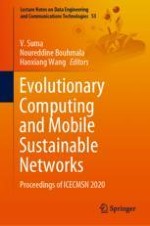2021 | OriginalPaper | Buchkapitel
Machine Learning-Based Green and Energy Efficient Traffic Grooming Architecture for Next Generation Cellular Networks
verfasst von : Deepa Naik, Pothumudi Sireesha, Tanmay De
Erschienen in: Evolutionary Computing and Mobile Sustainable Networks
Verlag: Springer Singapore
Aktivieren Sie unsere intelligente Suche, um passende Fachinhalte oder Patente zu finden.
Wählen Sie Textabschnitte aus um mit Künstlicher Intelligenz passenden Patente zu finden. powered by
Markieren Sie Textabschnitte, um KI-gestützt weitere passende Inhalte zu finden. powered by
